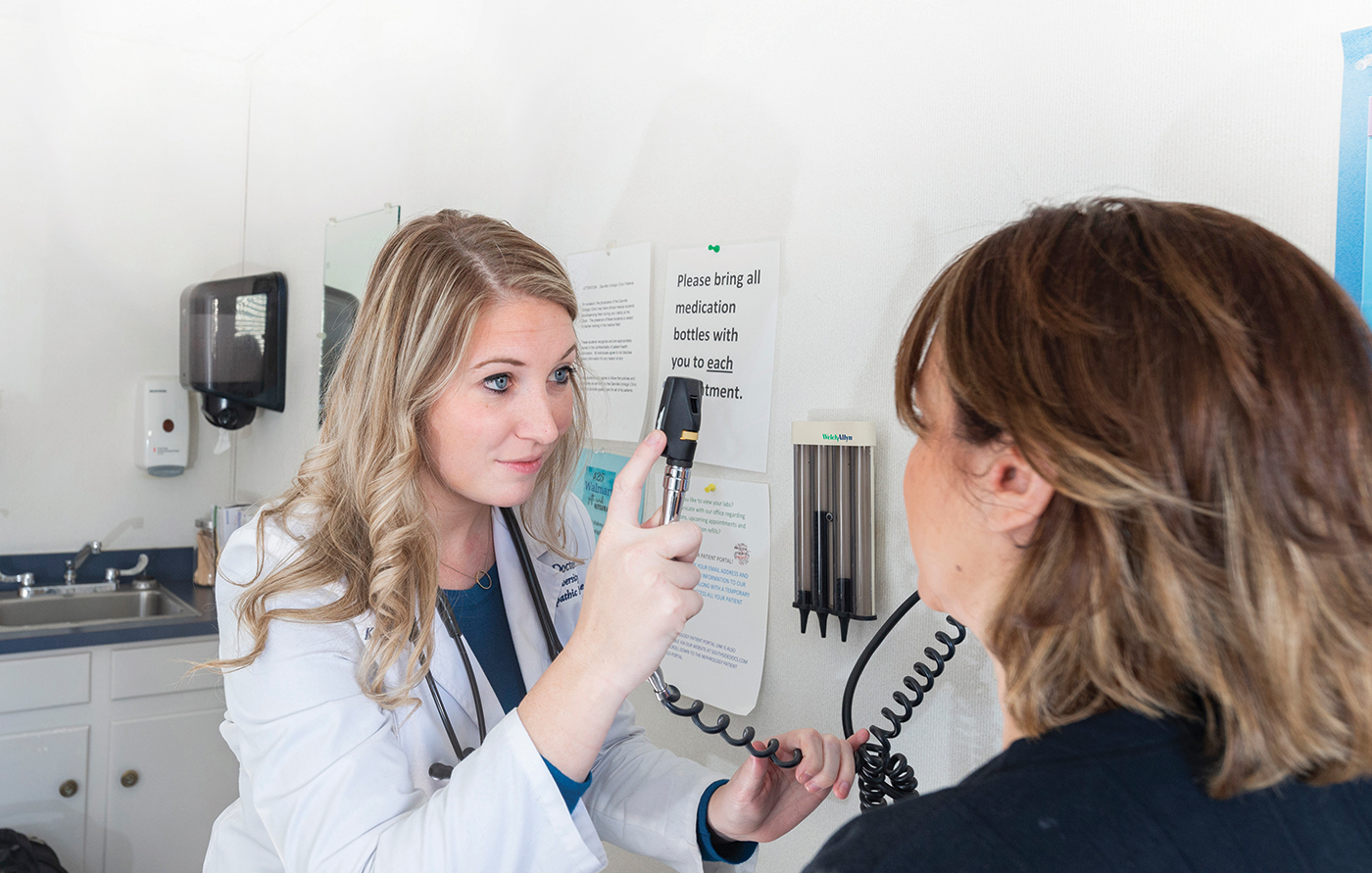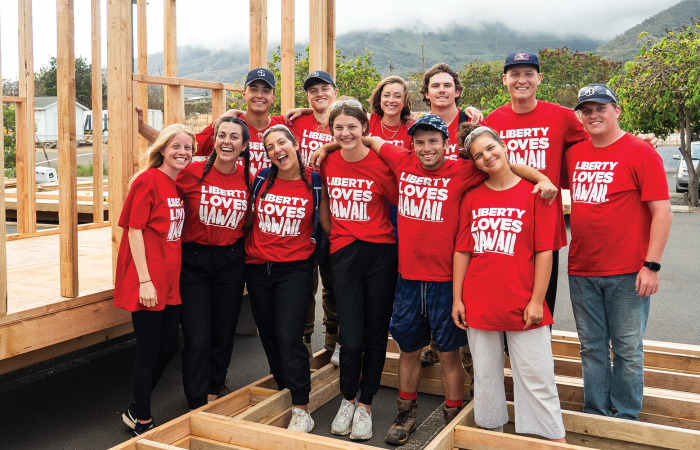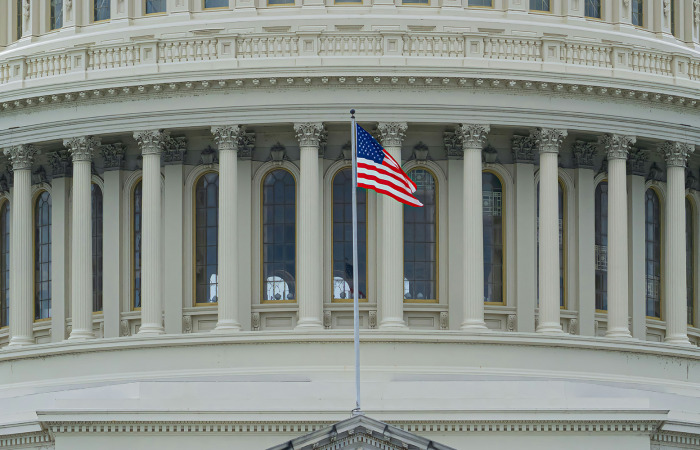Medical School continues its founding mission to reach Southside Virginia
About an hour south of Lynchburg sits the city of Danville and its 41,000 residents. Though Danville is much larger than the town where fourth-year student-doctor Kaitlyn Murray grew up in rural Ohio, it is one of the many underserved areas in Southside Virginia — a region where Liberty University College of Osteopathic Medicine (LUCOM) is making an impact.
“People have to be resourceful in Danville,” Murray said. “You don’t have access to specialty doctors at your fingertips.”
Back in 2011, when LU announced plans to build a medical school on Liberty Mountain, administrators had a specific goal in mind: to train student-doctors to serve patients in 40 tobacco-dependent localities in southern and southwest Virginia in desperate need of quality healthcare.
The school and its mission was made possible, in part, by grants from the Virginia Tobacco Region Revitalization Commission, which is responsible for disbursing federal funds received from a settlement with the country’s largest tobacco manufacturers over healthcare costs due to tobacco use. Many localities suffered economically as the tobacco industry declined. The commission’s job is to promote economic growth and development in communities that were tobacco-dependent for most of the 20th century.
At LUCOM’s groundbreaking ceremony in Fall 2012, the commission presented Liberty with $20.5 million to establish the medical school and work toward a goal of graduating 2,800 doctors by 2038 who would then practice medicine in Virginia’s old tobacco-producing communities.
Murray hopes to be one of those graduates. She was placed in Danville for her third-year rotation and returned this year to continue her final rotation before she graduates in May. She would like to stay in Danville but will learn of her residency placement later this spring.
“I never pictured myself practicing medicine in Danville,” she said. “The fact that the Tobacco Commission and Liberty fund rotation sites in these rural areas is important. It’s bringing in people from all over the country to do their schooling at Liberty and complete their rotations in the underserved areas of Virginia and actually stay in those areas.”
Seeing the need
When student-doctors graduate, they are placed in residency programs at hospitals or healthcare systems. But this presents a challenge for LUCOM’s mission in Virginia’s tobacco-dependent region, where only 39 first-year residencies are currently available (out of 589 across the state). LUCOM Dean Dr. Peter Bell said that there is an urgency to establish more residencies for future physicians.
“We geared up these student-doctors with the expectation that this is a great place to train, and they should come back and practice here,” Bell said. “What we’re lacking is residencies.”
In January, the Tobacco Commission voted to extend LUCOM’s grant for another year to assist the university in its efforts to grow the number of residencies in underserved areas in Southside Virginia.
According to Bell, medical schools across the country are graduating more physicians than the number of available residencies.
“Traditionally, money for establishing new residencies at hospitals comes from the federal government under Medicare,” Bell explained. “But many hospitals are capped at how many residency positions they can have funded. That only leaves the hospitals that have never accepted money from the federal government for residencies, and those are few and far between — in the Virginia tobacco counties, there are 16 small hospitals that have never received federal funds for residencies.”
Bell said that LUCOM staff understand the importance of doing their part to bring quality care to the region.
“The folks in tobacco counties deserve the same type of care that you get in Virginia’s bigger cities,” he said. “There’s no reason why we shouldn’t be offering them the same kind of treatments, maintenance and prevention programs, and access to quality care that the rest of the state gets. There shouldn’t be a second-class approach to healthcare just because they’re geographically in areas where people live farther apart or they don’t have the same sociological advantage.”
Filling the need
Growing up in a small cattle town in northern California, third-year medical student Landin Hagge saw firsthand the importance of serving rural areas as part of a family of medical professionals.
“My brother is the CEO of a rural hospital, and he constantly talks to me about the issues and concerns they have in rural healthcare,” Hagge said. “The biggest problem is attracting providers to come and live in these communities. Big hospitals can provide bigger incentives and work life balance. For example, if I went back to my own community and practiced, I would be the only doctor for an entire county.”
In big cities, patients also have access to doctors with a variety of specialties, he said. “If someone comes in having a heart attack in a rural hospital, you don’t have a cardiologist available at the drop of a hat.”
Hagge, who is currently doing his rotations in Petersburg, Va., said he has seen similar problems with his patients.
“There’s a need everywhere in the United States for more doctors,” he said. “A lot of patients I see will say that they tried to go to their primary doctor or family practice doctor, but they weren’t able to be seen for three to four months. Oftentimes, when they’re referred to a doctor, they are recommended to see them because they have an issue like high blood pressure that needs to be addressed in a few weeks, not a few months.”
Murray said that when LUCOM sends out student-doctors to rural areas for rotations, rather than having them stay closer to Lynchburg, the university is helping the communities recruit more doctors like herself.
“Once you come here as a student and see firsthand that these patients desperately need physicians in this area, you’re likely to stay in the underserved areas,” she said.
Student-doctors also learn how to treat a diverse population and build trust within the communities they serve, Murray said.
“It means a lot to the communities, and it means a lot to you as a future physician,” she said. “When you have these patients come in, and they see that you’re from the Midwest but care about a small town like Danville, it matters. Patients in these towns want to grow close to their physicians. It means a lot when a patient tells me how happy they are that I’m here and want me to stay and come to me when I’m ready to practice on my own. I don’t think that happens in big cities.”
Caring for the Community
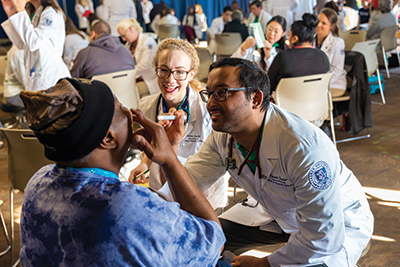 Throughout the year, Liberty medical students serve patients in Lynchburg and Southside Virginia at daylong community clinics coordinated by LUCOM’s Office of Clinical Collaboration & Education.
Throughout the year, Liberty medical students serve patients in Lynchburg and Southside Virginia at daylong community clinics coordinated by LUCOM’s Office of Clinical Collaboration & Education.
Under the office’s Community Care Collaborative, LUCOM partners with local nonprofits to provide free services such as physicals, flu shots, mammograms, and mental health and vision screenings.
For the last four years, student-doctors and faculty and staff have hosted clinics in Martinsville and Lynchburg, assisting over 1,000 patients. The goal is to help increase residents’ access to various services and connect them with healthcare resources regardless of their insurance or income status.
First-year medical student Michaela Gartman said she loved the chance to immerse herself in the community rather than stay in the classroom.
“I really like how we benefit the community. We’re not doing ‘drive-by’ medicine but making connections afterward,” she said. “We are able to set patients up with resources in their community to overall better their health. We really take in the osteopathic model of body, mind, and spirit, and we’re really working to develop that in every patient.”
LUCOM student-doctors and faculty and staff volunteered 4,575 service hours within Virginia’s tobacco region in 2018.
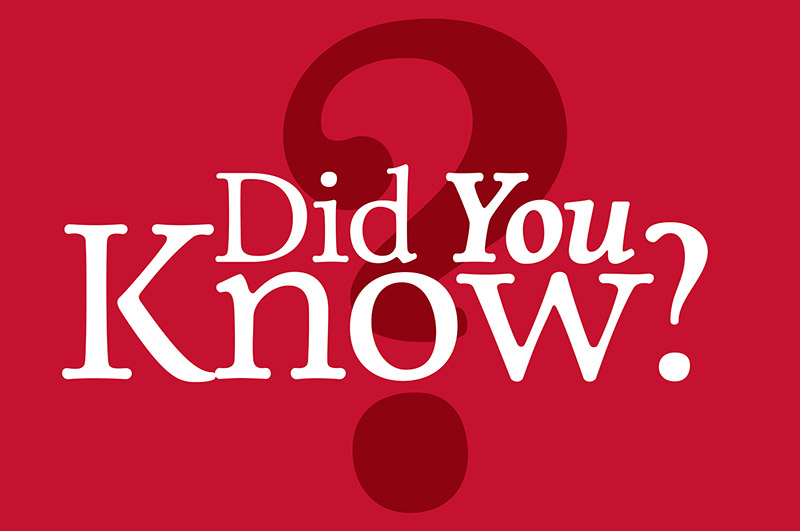 More than 100 Liberty medical students completed 916 clinical rotations within Virginia’s tobacco region during the 2017-18 academic year.
More than 100 Liberty medical students completed 916 clinical rotations within Virginia’s tobacco region during the 2017-18 academic year.
